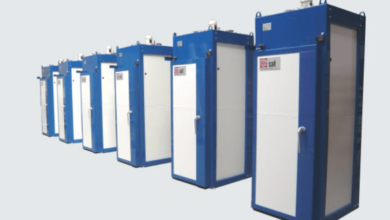Different Types of Ceilings in Homes, Transform Your Space

Ceilings often play a crucial role in defining a home’s character and ambiance. They can range from simple and functional to elaborate and decorative. Understanding the various types of ceilings and their uses can help you make informed decisions when renovating or designing your space. Exploring different ceiling styles can offer exciting possibilities, whether you want to modernize an old house or update your home.
Our guide on Different Types of Ceilings in Homes might be particularly useful for modernizing homes. It provides valuable insights into blending traditional charm with contemporary updates.
1. Flat Ceilings
Flat ceilings are the most common and traditional type of ceiling. They offer a clean, unobtrusive look and are relatively easy to install and maintain. This style is perfect for those who prefer a minimalist approach or wish to keep the focus on other design elements within the room. Flat ceilings are also ideal for rooms with standard dimensions, providing a straightforward and functional solution.
Flat ceilings work well with various lighting options, such as recessed lighting or pendant fixtures. They also allow for the easy integration of ceiling fans if desired. For a modern touch, consider painting the ceiling in a color that contrasts with the walls or using textured paint for subtle visual interest.
2. Coffered Ceilings
Coffered ceilings add a touch of elegance and sophistication to any room. This style features a grid of sunken panels that create a series of recessed areas, often outlined by molding. Coffered ceilings are ideal for formal spaces such as dining rooms or living areas where you want to make a statement. They can also add architectural interest and depth to otherwise flat ceilings.
These ceilings can be customized with different panel sizes, shapes, and finishes. For a more contemporary look, consider using metal or glass panels. If you’re interested in modernizing your home, you might also want to explore other design ideas in our Different Types of Ceilings in Homes.
3. Tray Ceilings
Tray ceilings create a dramatic effect by incorporating a stepped design. The ceiling features a central panel higher than the surrounding area, creating a “tray” effect. This design adds visual interest and can make a room feel more spacious and open. Tray ceilings are often used in bedrooms and living rooms to create a focal point.
You can enhance a tray ceiling by adding crown molding or installing LED lighting around the perimeter. This lighting creates a halo effect that highlights the ceiling’s architectural detail. Tray ceilings can also be painted in different colors or finishes to add depth and dimension.
4. Vaulted Ceilings
Vaulted ceilings are characterized by their upward arch, which can dramatically increase a room’s height. This style is common in older homes and can create a sense of grandeur and spaciousness. Vaulted ceilings work particularly well in living rooms, great rooms, and entryways where you want to emphasize openness and height.
Consider adding skylights or large windows to enhance natural light when incorporating a vaulted ceiling. Exposed beams or trusses can add architectural interest and complement the high ceiling. For more ideas on modernizing different home elements.
5. Beamed Ceilings
Beamed ceilings add a rustic or traditional touch to a room, depending on the style of the beams. These ceilings feature exposed wooden beams that can be either decorative or functional. Beams can be painted, stained, or left in their natural state to match the room’s overall design.
This ceiling style works well in spaces where you want to create a warm, inviting atmosphere. Beamed ceilings are often used in dining rooms, kitchens, and living areas. Consider combining beamed ceilings with contemporary furnishings and decor for a modern twist.
6. Exposed Ceilings
Exposed ceilings are an excellent choice for industrial or modern spaces where you want to highlight structural elements. This style leaves the ceiling structure, such as ductwork, pipes, and beams, visible. Exposed ceilings create a raw, urban aesthetic and can be paired with minimalistic decor to enhance the industrial vibe.
Consider adding modern light fixtures or decorative elements such as hanging planters to soften the look of an exposed ceiling. This style works well in lofts, studios, and contemporary homes where the industrial look is desired.
7. Drop Ceilings
Drop or suspended ceilings are popular in commercial spaces and basements. This type of ceiling consists of a grid system with lightweight panels. Drop ceilings are practical for concealing wiring, plumbing, and other infrastructure while providing easy maintenance access.
While drop ceilings are more commonly used in functional spaces, they can be customized with different panel styles and colors to fit residential applications. For example, installing decorative tiles or adding lighting fixtures can enhance the visual appeal of a drop ceiling.
8. Panel Ceilings
Panel ceilings offer a decorative alternative to flat ceilings. They are made of individual panels arranged in various patterns or designs. Panel ceilings can be made from wood, metal, or fabric, adding texture and visual interest to a room.
This style works well in rooms where you want to create a unique focal point. Panel ceilings can make a statement in dining rooms, home theaters, or entryways. They also allow for creativity in design, with options ranging from traditional to contemporary styles.
9. Tin Ceilings
Tin ceilings have experienced a resurgence in popularity due to their vintage charm and durability. These ceilings feature embossed metal tiles that can add a classic, elegant touch to any room. Tin ceilings are often used in historic renovations or in homes where a touch of old-world charm is desired.
Tin ceilings can be painted or left in their natural metallic state, depending on the desired look. They are particularly effective in kitchens, dining rooms, and other areas where a decorative ceiling can enhance the overall design.
10. Fabric Ceilings
Fabric ceilings are a modern and stylish option that adds softness and texture to a room. These ceilings feature fabric stretched across a framework, creating a smooth, seamless surface. Fabric ceilings are available in various colors, patterns, and textures, allowing for high customization.
This style is often used in contemporary or luxury homes where a unique and sophisticated look is desired. Fabric ceilings can also help with acoustics, making them a good choice for home theaters or music rooms.
Conclusion
Choosing the right ceiling style can significantly impact the look and feel of your home. Whether you prefer the classic elegance of coffered ceilings or the modern appeal of exposed beams, understanding the different types of ceilings can help you make the best choice for your renovation or design project.
If you’re interested in modernizing your home, don’t forget to check out our guide on 10 Ways to Modernize an Old House for additional ideas and inspiration. For professional help with your renovation project, visit our services page to learn how we can assist you in achieving your design goals.
Additional Resources
For more information and inspiration on ceiling styles, consider visiting these helpful resources:
- Houzz – Offers a wide range of home design ideas and renovation tips.
- Apartment Therapy – Provides practical advice and inspiration for home improvement projects.






